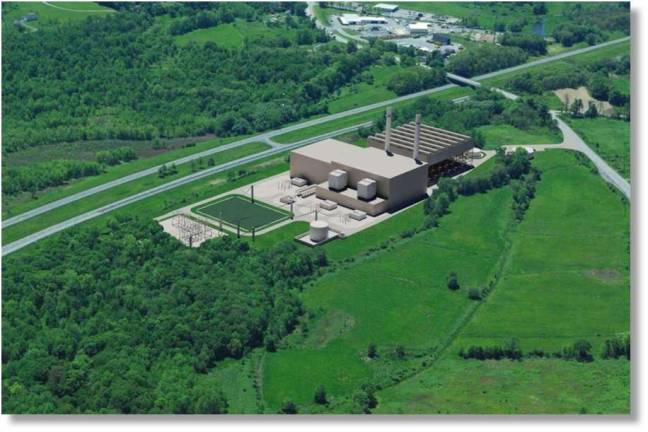Is a new power plant the right call?

The responsible solution
The CPV Valley Energy Center provides an environmentally responsible solution to reliably meet the region’s growing energy demands and sustain the balanced growth the county has been experiencing year over year.
In 2008, New York State’s electric system operator determined that the lower Hudson Valley was in need of a significant new electricity supply as the result of retirements of older coal and oil generators. In April 2008, we announced plans for a natural gas powered electric generating facility. The lack of sufficient wind and available land makes wind power infeasible for this region. The location selected for the project is a 122-acre commercially zoned parcel in Wawayanda.
Over the following seven years, we went through a rigorous public review and permitting process that involved over 100 publicly-noticed meetings and nearly 200 briefings of elected officials, neighbors, environmental groups, and interested citizens. We received and addressed numerous comments during public forums. This process was established by regulators to analyze numerous aspects of projects, including air emissions, zoning, community character, economic impacts, traffic studies, endangered species, ecological impacts, and visual impacts.
The high efficiency of this project, achieved through cutting edge turbine technology combined with the use of natural gas, makes it one of the cleanest generators in the country. The natural gas fueling the project is the same clean burning gas currently used in homes and schools. The facility emissions were studied extensively and determined to meet all federal and state air quality standards designed to protect and improve air quality. The emissions from the facility, which are the same as those from homes burning natural gas, will not impact crops or soils. NASA satellite photos demonstrate that building new facilities to replace older generating units is having a profound benefit in cleaning our air, particularly in the lower Hudson Valley (nasa.gov/content/goddard/new-nasa-images-highlight-us-air-quality-improvement/#.Vq9LyPkrLmE).
By utilizing air cooling and recycled greywater, CPV Valley will use less water than almost any other conventional generating facility in the state. This will preserve our indigenous water resources for other uses, such as irrigation for agriculture. Additional benefits include the creation of more than 500 local construction jobs over a 30-month construction period and approximately 100 well-paid direct and induced jobs once operational. It will pay more than $50 million to the county, town and school district and will help lower electricity costs, while providing reliable, clean electricity to power the region’s growth for decades to come.
Steve Remillard, Vice President of Development, Competitive Power Ventures
Not a good deal; not a done deal
The Competitive Power Ventures (CPV) gas power plant is to be located on 30 acres between Route 6 and I-84, two-tenths of a mile from Route 17M, in Slate Hill, Wawayanda. It includes two 275-foot smoke stacks, compressor station, a near million-gallon diesel tank, 15,000-gallon ammonia tank, and a seven-mile Valley Lateral pipeline to connect CPV to the Millennium Pipeline at Minisink’s compressor station.
The Department of Environmental Conservation allowed the Town of Wawayanda, approximately 7,500 citizens, to assume lead agency for process review. Only residents living within 500 feet were notified in 2013; the permitting process began in 2008.
The Town of Wawayanda issued all approvals, but there were faults in the State Environmental Quality Review; CPV claimed an “impact radius” of five miles, but standard air modeling analysis shows at least 30 miles for direct impact. Nor did CPV identify “hot spots” that would receive more emissions because of valley topography and wind patterns. Schoolchildren, residents, tourists, animals, farms, and orchards way beyond Wawayanda are at risk.
Per Wilma Subra, chemist and MacArthur “genius grant” recipient, chemicals released into the air from compressor facilities include 26 volatile organic compounds – including benzene and formaldehyde, known human carcinogens – that combine with air or human tissue in harmful ways.
The plant is designed to produce 650 megawatts of electricity by burning fracked natural gas. Governor Cuomo banned fracking in New York State citing health concerns. This plant would annually produce 2.1 million tons of carbon dioxide and hundreds of tons of volatile organic compounds including nitrogen oxides, sulfur dioxide, particulate matter, and formaldehyde. These products, which include carcinogens, neurotoxins, and endocrine disruptors, are a health threat.
2015 was the hottest year on record. Greenhouse gases, such as methane, produced by this plant would contribute to global warming. We need to focus on renewable energy rather than fracked gas. There is no need for this power plant. Indian Point is only operating at 43 percent capacity. If we need more electricity, wind, solar, and Canadian hydropower are available.
This is not a done deal. Call or write to Governor Cuomo (518-474-8390, gov.cuomo@chamber.state.ny.us, cc basil.seggos@dec.ny.gov) asking him to: Deny the 401 water quality certificate for the Valley Lateral Pipeline; stop the project pending a more complete health study; not grant CPV a power purchase agreement, which could increase your electricity bill.
Sign the online petition at protectorangecounty.org.
Elizabeth Knight, concerned citizen and Sustainable Warwick member